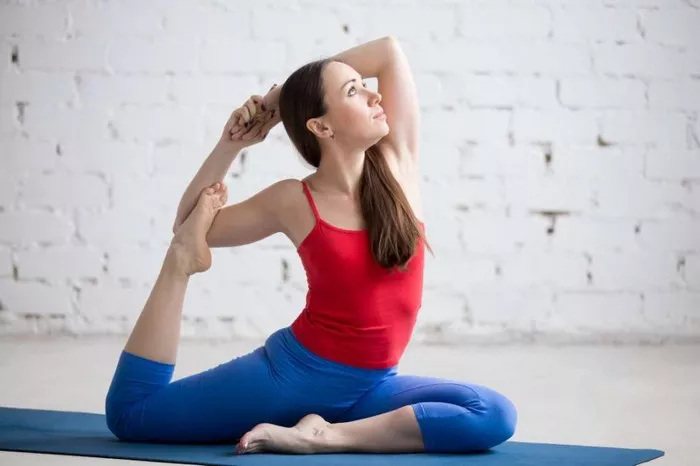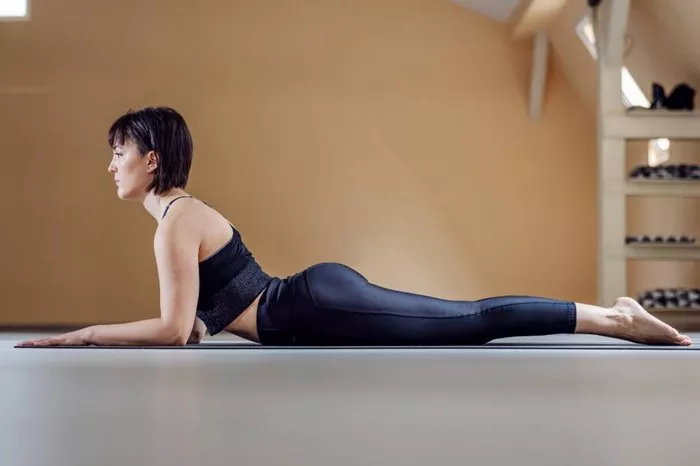In today’s fast-paced world, finding an effective way to stay fit and centered is essential. Full body power yoga combines strength, flexibility, and mindfulness, making it a dynamic workout that engages the entire body. This article explores the principles of power yoga, its benefits, key poses, and how to incorporate it into your fitness routine for optimal results.
Understanding Full Body Power Yoga
Full body power yoga is a vigorous and dynamic form of yoga that emphasizes strength-building, cardiovascular endurance, and flexibility. Unlike traditional yoga styles, power yoga incorporates a faster pace, often resembling a workout routine that combines elements of strength training and aerobic exercise.
The Philosophy of Power Yoga
Power yoga is rooted in the principles of Hatha yoga but adapts to modern fitness needs. It encourages practitioners to cultivate strength, balance, and focus while promoting a strong mind-body connection. The practice also emphasizes breath control (pranayama) to enhance the physical experience and mental clarity.
Key Principles
Mindful Movement: Focus on synchronizing breath with movement to enhance the flow of energy throughout the body.
Strength and Flexibility: Build strength in major muscle groups while improving flexibility and balance.
Focus and Concentration: Cultivate mental clarity and focus through challenging poses and sequences.
Adaptability: Modify poses as needed to accommodate individual fitness levels and goals.
Benefits of Full Body Power Yoga
Builds Strength
Full body power yoga incorporates various poses that target all major muscle groups. Practitioners develop functional strength, enhancing overall fitness and physical performance.
Increases Flexibility
Dynamic movements and stretches improve flexibility, helping to reduce the risk of injury and enhance overall mobility.
Boosts Cardiovascular Health
The vigorous pace of power yoga provides a cardiovascular workout, improving heart health and increasing stamina.
Enhances Mental Clarity
Power yoga encourages mindfulness and concentration, helping to reduce stress and improve mental clarity and focus.
Promotes Weight Loss
The combination of strength training and aerobic exercise in power yoga can aid in weight loss by burning calories and building lean muscle mass.
Improves Balance and Coordination
Challenging poses and sequences enhance balance and coordination, essential for overall fitness and daily activities.
See Also: How Often Should You Practice CorePower Yoga Sculpt
Key Poses for Full Body Power Yoga
Incorporating a variety of poses is crucial for a full body power yoga practice. Here are some essential poses that engage multiple muscle groups:
Mountain Pose (Tadasana)
How to Practice:
Stand tall with feet together, arms at your sides.
Ground your feet and engage your thighs.
Reach your arms overhead, palms facing each other.
Focus on a point in front of you to enhance balance.
Benefits: Promotes good posture, strengthens the legs, and improves overall alignment.
Plank Pose (Phalakasana)
How to Practice:
Start in a push-up position with your hands under your shoulders and feet hip-width apart.
Engage your core and keep your body in a straight line.
Hold for several breaths, focusing on maintaining stability.
Benefits: Builds core strength, engages the arms, and improves endurance.
Warrior I (Virabhadrasana I)
How to Practice:
From a standing position, step one foot back, keeping the front knee bent.
Raise your arms overhead, palms facing each other.
Press your back heel into the ground and engage your legs.
Benefits: Strengthens the legs, opens the hips and chest, and builds focus and determination.
Warrior II (Virabhadrasana II)
How to Practice:
Transition from Warrior I by opening your hips and shoulders to face the side.
Extend your arms parallel to the floor, gazing over your front hand.
Keep your front knee bent and back leg straight.
Benefits: Enhances strength and stamina in the legs, improves balance, and encourages a sense of empowerment.
Chair Pose (Utkatasana)
How to Practice:
Stand with feet together, bend your knees, and sit back as if sitting in a chair.
Raise your arms overhead, keeping your biceps by your ears.
Hold for several breaths, engaging your core and legs.
Benefits: Strengthens the thighs, glutes, and core while improving focus and endurance.
Downward-Facing Dog (Adho Mukha Svanasana)
How to Practice:
Start on all fours, then lift your hips to form an inverted V-shape.
Press your hands into the ground and keep your feet hip-width apart.
Relax your head between your arms and engage your core.
Benefits: Stretches the spine, hamstrings, and calves while strengthening the shoulders and arms.
Chaturanga Dandasana (Four-Limbed Staff Pose)
How to Practice:
From plank position, lower your body in a straight line, keeping your elbows close to your sides.
Hold the pose just above the ground, engaging your core.
Transition to Upward-Facing Dog or Cobra Pose.
Benefits: Builds arm and core strength while improving overall stability.
Bridge Pose (Setu Bandhasana)
How to Practice:
Lie on your back with knees bent and feet flat on the floor.
Press your feet into the ground as you lift your hips toward the ceiling.
Clasp your hands under your back and engage your legs.
Benefits: Strengthens the back, glutes, and legs while opening the chest.
Tree Pose (Vrksasana)
How to Practice:
Stand tall and shift your weight to one leg.
Place the sole of the opposite foot on the inner thigh or calf (avoid the knee).
Bring your palms together at your heart or raise your arms overhead.
Benefits: Enhances balance and concentration while strengthening the legs and core.
Savasana (Corpse Pose)
How to Practice:
Lie on your back with legs extended and arms by your sides, palms facing up.
Close your eyes and focus on your breath, allowing your body to relax.
Benefits: Promotes relaxation and integration of the practice, allowing for recovery and rejuvenation.
Incorporating Full Body Power Yoga into Your Routine
Set a Schedule
Aim to practice full body power yoga at least 2-3 times a week for optimal results. Consistency is key to building strength and improving flexibility.
Start Slow
If you’re new to power yoga, begin with shorter sessions and gradually increase the duration and intensity. Listen to your body and modify poses as needed.
Focus on Breath
Incorporate breathwork into your practice by synchronizing your movements with your breath. This enhances the mind-body connection and promotes relaxation.
Create a Suitable Environment
Find a quiet and comfortable space for your practice. Use a yoga mat, props, and calming music to create an inviting atmosphere.
Stay Hydrated
Drink plenty of water before and after your practice to stay hydrated, especially during vigorous sessions.
Combine with Other Forms of Exercise
Integrate power yoga with other fitness activities, such as strength training, running, or cycling, to create a balanced fitness routine.
Listen to Your Body
Pay attention to how your body feels during and after each practice. Modify poses or take breaks as needed to prevent injury.
Conclusion
Full body power yoga is a transformative practice that energizes both the body and mind. By incorporating strength-building poses, improving flexibility, and promoting mindfulness, practitioners can achieve a balanced and fulfilling fitness routine. Embrace the dynamic nature of power yoga, and discover its empowering benefits for your overall well-being. Whether you are a beginner or an experienced yogi, power yoga can help you cultivate strength, focus, and inner peace. Start your journey today and experience the profound impact of this invigorating practice.
You Might Be Interested In


















